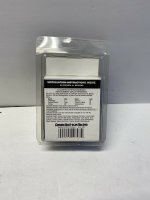This whole issue gets interesting in the following way:
UL lists specific Classified breakers which are UL tested and approved for use in other manufacturers' panels.
But the documentation for those target panels does not usually approve or even mention the use of another manufacturer's Classified breakers in those panels.
Does the UL approval of use of Classfied breaker, A, is panel B constitute an ammendment to the original UL listing of panel B, which did not include testing with A breakers?
It is a conundrum…
The explanation is that the panel must now (since the 1990s) be tested and listed with breakers to be complete, and nobody is going to pay for testing their panels with someone else’s breakers, why would they? Ergo panel listings are only going to show their own breakers. In the PAST, the testing requirements by UL were separate , so some panel mfrs, like Sylvania and Murray, used to actually list the competitors’ breakers that were acceptable right on the panel label, you can occasionally still find those in the wild and technically, that is still valid because it was at the time they were made. After the change though, the panels and breakers had to be tested TOGETHER.
The concept of “Classified” breakers came along in the late 90s after pressure on UL to make a way for mfrs (mostly Eaton) to get around the fact that many of the older panel brands in the field no longer existed and/our were absorbed, through acquisitions, into Eaton, who now had Bryant, Crouse Hinds, T&B, Challenger, Sylvania, and some parts of Goulds legacy breakers rolled up into their stable. So UL allowed the breaker mfrs to test the Classified breakers
in these panels (and any other new competitor panels they were willing to pay for testing in), which is why they are referred to as “replacement” breakers and their use is restricted to those
specific panel part numbers. Do installers regularly ignore that and do AHJs fail to double check that aspect? Yep. But technically, it’s part of the allowance that the numbers match.
This is why, in a new installation, say for a Homeline panel, at least ONE breaker in that panel needs to be Homeline, because the PANEL must have a Homeline breaker in it to be listed. But after that, an installer can legally stuff the rest of it with Eaton CL type “replacement” breakers if they so choose. The recent supply chain challenges have necessitated that in a lot of cases.


